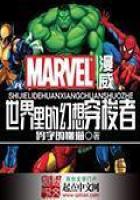There was some reason for the Ring's faith in its invulnerability.It controlled Governor and legislature, was formidable in the national councils of the Democratic party, and its Governor was widely mentioned for the presidential nomination.It possessed complete power over the city council, the mayor, and many of the judges.It was in partnership with Gould and Fiske of the Erie, then reaping great harvests in Wall Street, and with street railway and other public service corporations.Through untold largess it silenced rivalry from within and criticism from without.And, when suspicion first raised its voice, it adroitly invited a committee of prominent and wealthy citizens, headed by John Jacob Astor, to examine the controller's accounts.After six hours spent in the City Hall these respectable gentlemen signed an acquitment, saying that "the affairs of the city under the charge of the controller are administered in a correct and faithful manner."Thus intrenched, the Ring levied tribute on every municipal activity.Everyone who had a charge against the city, either for work done or materials furnished, was told to add to the amount of his bill, at first 10%, later 66%, and finally 85%.One man testified that he was told to raise to $55,000 his claim of $5000.He got his $5000; the Ring got $50,000.The building of the Court House, still known as "Tweed's Court House," was estimated to cost $3,000,000, but it cost many times that sum.
The item "repairing fixtures" amounted to $1,149,874.50, before the building was completed.Forty chairs and three tables cost $179,729.60; thermometers cost $7500.G.S.Miller, a carpenter, received $360,747.61, and a plasterer named Gray, $2,870,464.06for nine months' "work." The Times dubbed him the "Prince of Plasterers." "A plasterer who can earn $138,187 in two days [December 20 and 21] and that in the depths of winter, need not be poor." Carpets cost $350,000, most of the Brussels and Axminster going to the New Metropolitan Hotel just opened by Tweed's son.
The Ring's hold upon the legislature was through bribery, not through partizan adhesion.Tweed himself confessed that he gave one man in Albany $600,000 for buying votes to pass his charter;and Samuel J.Tilden estimated the total cost for this purpose at over one million dollars.Tweed said he bought five Republican senators for $40,000 apiece.The vote on the charter was 30 to 2in the Senate, 116 to 5 in the Assembly.Similar sums were spent in Albany in securing corporate favors.The Viaduct Railway Bill is an example.This bill empowered a company, practically owned by the Ring, to build a railway on or above any street in the city.It provided that the city should subscribe for $5,000,000of the stock; and it exempted the company from taxation.
Collateral bills were introduced enabling the company to widen and grade any streets, the favorite "job" of a Tammany grafter.
Fortunately for the city, exposure came before this monstrous scheme could be put in motion.
Newspapers in the city were heavily subsidized.Newspapers in Albany were paid munificently for printing.One of the Albany papers received $207,900 for one year's work which was worth less than $10,000.Half a dozen reporters of the leading dailies were put on the city payroll at from $2000 to $2500 a year for "services."The Himalayan size of these swindles and their monumental effrontery led the New York Sun humorously to suggest the erection of a statue to the principal Robber Baron, "in commemoration of his services to the commonwealth." A letter was sent out asking for funds.There were a great many men in New York, the Sun thought, who would not be unwilling to refuse a contribution.But Tweed declined the honor.In its issue of March 14, 1871, the Sun has this headline:
"A GREAT MAN'S MODESTY"
"THE HON.WILLIAM M.TWEED DECLINES THE SUN'S STATUE.
CHARACTERISTIC LETTER FROM THE GREAT NEW YORK PHILANTHROPIST.HETHINKS THAT VIRTUE SHOULD BE ITS OWN REWARD.THE MOST REMARKABLELETTER EVER WRITTEN BY THE NOBLE BENEFACTOR OF THE PEOPLE."Another kind of memorial to his genius for absorbing the people's money was awaiting this philanthropic buccaneer.Vulgar ostentation was the outward badge of these civic burglaries.
Tweed moved into a Fifth Avenue mansion and gave his daughter a wedding at which she received $100,000 worth of gifts; her wedding dress was a $5000 creation.At Greenwich he built a country estate where the stables were framed of choice mahogany.
Sweeny hobnobbed with Jim Fiske of the Erie, the Tweed of Wall Street, who went about town dressed in loud checks and lived with his harem in his Opera House on Eighth Avenue.
Thoughtful citizens saw these things going on and believed the city was being robbed, but they could not prove it.There were two attacking parties, however, who did not wait for proofs--Thomas Nast, the brilliant cartoonist of Harper's Weekly, and the New York Times.The incisive cartoons of Nast appealed to the imaginations of all classes; even Tweed complained that his illiterate following could "look at the damn pictures." The trenchant editorials of Louis L.Jennings in the Times reached a thoughtful circle of readers.In one of these editorials, February 24, 1871, before the exposure, he said: "There is absolutely nothing--nothing in the city--which is beyond the reach of the insatiable gang who have obtained possession of it.














